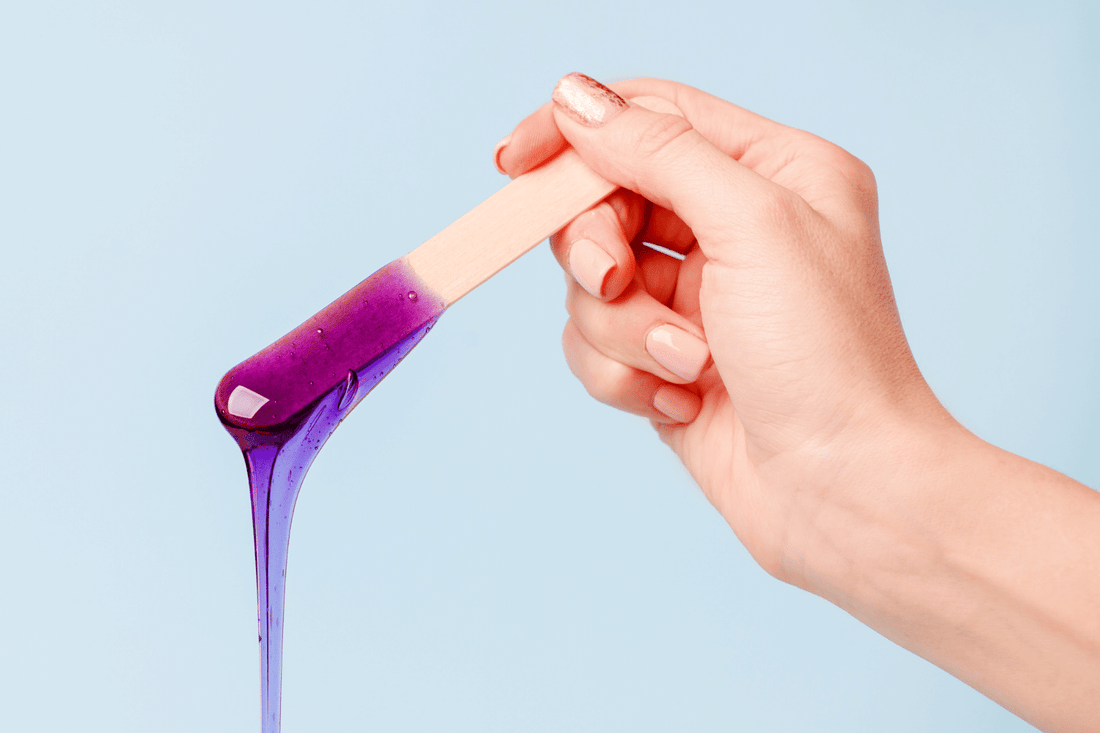Chances are you’ve seen or passed by some type of salon in your lifetime that offers waxing whether it be on the face or body. Waxing has become one of the most popular hair removal methods in the 21st century. Many people love the longer-lasting effects and close-to-skin properties waxing has, but can waxing lead to reduced hair growth over time? Let’s find out below.
The Waxing Process
The waxing process (whether done at home or by a professional) usually calls for your wax of choice, wax strips, baby oil, baby powder, and aloe as basic tools. There are many different waxes available on the market, all with different purposes. There are soft waxes, hard waxes, sugar waxes, and so forth.
When waxing, you may notice that your hair won’t grow back for another 1-2 weeks since your hair is being removed at the root. If you are looking to be on a hair waxing schedule, the general turnaround before being able to wax again is 3-4 weeks, as your hair needs to be at least ¼” inch long for the wax to be able to fully grip onto the hair.
If you notice any random stubbles or ingrown hairs, this is normal. Typically this means the hair was growing underneath your skin at the time of your previous wax. Sticking to a hair routine will help to even out your hair growth.
Waxing and The Hair Growth Cycle
The hair growth cycle are the phases in which your hair grows, rests, sheds, and a new hair grows in. It can be broken down into 4 main phases:
- Anagen Phase. The anagen phase is the 1st phase, which is also known as the active growth phase of the hair growth cycle.
- Catagen Phase. The catagen phase follows and is known as the transitional phase where growth stops and your follicles begin to shrink.
- Telogen Phase. The telogen phase is next and is considered the resting phase. This phase accounts for the majority of your hair growth cycle, whereby your hair follicle is at rest and the hair has fully formed.
- Exogen Phase. Finally, the exogen phase is the last phase in which the hair officially sheds - and thus, the cycle begins all over again.
Waxing interrupts the telogen phase of the hair growth cycle, or the resting phase. When you are forcibly removing the hair at the root routinely, over time your body may adjust by prolonging the resting cycle which results in slower hair growth.
Why Wax?
Many people opt for waxing over shaving, laser, or other hair removal processes for several different reasons:
- Hair grows back slower: As compared to shaving (which for some people hair can grow back within 24 hours) waxing yields a slower growth rate because the hair is being removed at the root as opposed to the surface
- Less friction, ingrown hairs, and rashes: One of the cons of shaving is how easily the skin is able to be irritated from a dull blade or shaving in the wrong direction. The friction from the shaving blades can often cause ingrown hairs, cuts, and even cause darkening of the area over the time.
- Less expensive: While the cheapest option of hair removal processes tends to be shaving, waxing (especially at home) can be cheaper in comparison to options such as laser hair removal or electrolysis.
So Does Waxing Stop Hair Growth?
While this question truly varies from person to person, for some, waxing has significantly slowed down hair growth but rarely does it permanently stop hair growth.
The hair is removed at the root in waxing, which can definitely cause hair to grow back slower and even lighter/finer in some instances, but beneath the skin the hair follicle remains the same. In order to permanently stop hair growth in any given area, the hair follicle in itself must be inhibited. While waxing may reduce hair growth, it is not a "permanent" option.
The only “permanent” options approved by the FDA on the market that can achieve such results are through electrolysis and laser hair removal. Electrolysis uses shortwave radio frequencies through needles to destroy the hair follicles; touch-ups are needed every few weeks. Laser hair removal works by using high-heat lasers to damage the hair follicle directly; touch-ups vary from every few months or even annually. Both of these options have the potential to stop hair growth for good, but it is dependent on the person. Age, genetics, area of hair, etc. all play a part in whether or not hair growth will be affected permanently.
To Wax or Not To Wax
With some dedication, you may potentially notice a slowdown in hair growth with waxing. This can lead to going longer in between waxing sessions and even finer or less hair in general; but these are all dependent on your age, gender, and genetics. If you are a beginner to waxing, it is always recommended to see a professional in order to get the best and safest results - knowledge and experience can go a long way in a process that is so sensitive!
We hope that you’ve learned a bit more about how hair grows and if waxing can be a good fit for you. If you’re hoping to support healthy hair overall, try working a little bit of our Hair Revival Serum into your roots! With a clinically tested formula that’s supported by dermatologists, your roots can finally get the reawakening they deserve.





